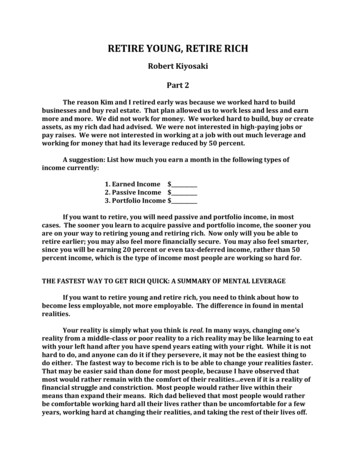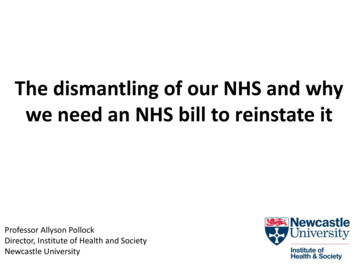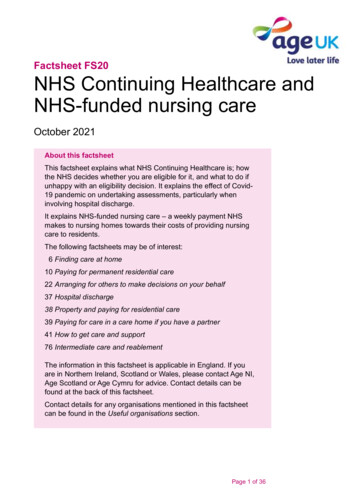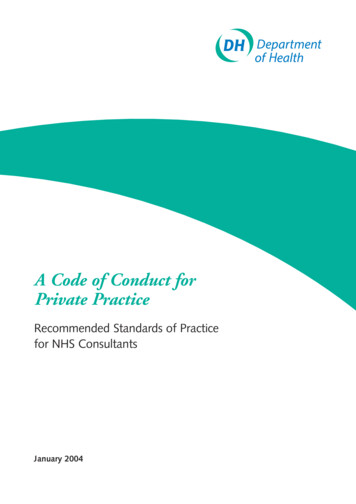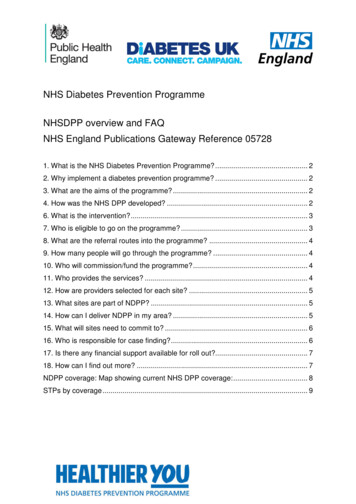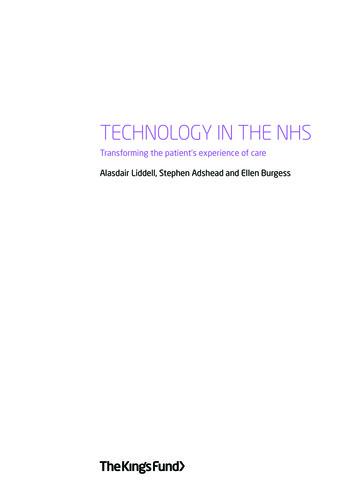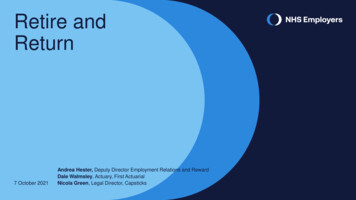
Transcription
Retire andReturn7 October 2021Andrea Hester, Deputy Director Employment Relations and RewardDale Walmsley, Actuary, First ActuarialNicola Green, Legal Director, Capsticks
Today’s webinar Flexible retirement options What is retire and return? Legal considerations Q&A session Resources to support your organisationRetire and Return2
Poll questions1. Do you have employment policies that coverretirement flexibilities including retire and return?2. Do you actively promote the retire and returnoption to staff?3. Do you know where to get advice on pensionscheme flexibilities including retire and return?If you answered no to any of the questions above, pleasetell us why? What are the barriers to doing this?Retire and Return3
Flexible retirement optionsDale Walmsley, Actuary, First ActuarialPresentation title4
Flexible retirement options- There are several flexible retirement options available:- Step down- Wind down- Draw down- Late retirement- These were explored in our webinar on 2 September- Recording available on the NHS Employers websiteRetire and return5
What is retire and return?-Retire and return is an alternative flexible retirement optionavailable to employers and staff-Broadly, retire and return means that members can drawtheir pension and return to working in the NHS-However, there may be implications on past and futurepension saving:-Future: Drawing 1995 benefits mostly prohibits buildingup further benefits in the NHS Pension Scheme – but notso for drawing 2008 and 2015 benefits-Past: Abatement Retire and return6
Suspension of abatement- Abatement is where a member is receiving an NHSpension but it is reduced on NHS re-employmentbefore their Normal Pension Age- Some abatement measures were temporarilysuspended via emergency legislation due to Covid-19,scheduled to end on 31 March 2022:- the “16 hour rule”- abatement for 1995 special class status holders- 2008/2015 drawn down abatementRetire and return7
Legal ConsiderationsNicola Green, Legal Director, CapsticksPresentation title8
Legal considerations Continuity of employment Breaks between roles Method of engagement on return Part time Bank work Fixed term Use of fixed term contracts
Continuity of service Effective break under the Employment Rights Act 1996 – Sunday to Saturday –therefore normally 2 weeks Payment under the Superannuation Act 1972, ERA states that continuity is broken no further right to a statutory redundancy payment AfC reflects ERA wording and therefore no contractual redundancy payment case by case basis
Breaks between contracts Booth v USA [1999] - EAT found for the USA and that there had been a break inservice/continuity even though the gaps were designed to prevent the employeegaining statutory rights Therefore, imposing a break purely to avoid employees accruing their statutoryemployment rights does not necessarily invalidate the break
Breaks between contracts Welton v Deluxe Retail Ltd [2013] – documentation issued before the break The EAT found that the second contract of employment had been created whenthe employee accepted the job offer, which meant that there was not a week's gapbetween the two contracts Do not issue contractual documentation for the return before retirement
Method of return - flexibility Part time work Part-time workers (prevention of less favourable treatment) Regulations Bank work Separate contract Avoid regular use of bank workers Fixed term work Fixed-term employees (prevention of less favourable treatment) Regulations
Use of fixed term contracts Terms should be no less favourable Age discrimination Both direct and indirect can be objectively justified What is the legitimate aim? Are steps taken proportionate? Non-renewal is a dismissal so consider the benefits of insisting on fixed termcontracts
Protection for fixed term employees Fair treatment between fixed-term and comparable permanent employees Fixed term to permanent after 4 years or more of successive fixed term contracts Unfair dismissal protection (after 2 years)
Prevention of less favourable treatment Fixed Term Employees (Prevention of Less Favourable Treatment) Regulations2002 No less favourable treatment concerning terms of contract (pay, pension, benefits) Must not be subjected to any other detriment (access to promotion, selection forredundancy, appraisals) Comparable permanent employee Unless can be objectively justified
Expiry of a fixed term contract Expiry of a fixed-term contract dismissal ACAS Code of Practice will not apply Procedural and substantive fairness still required where unfair dismissal rightshave accrued redundancy (and benefits that follow)? some other substantial reason?
Flexible retirement tirement-flexibilities-posterFlexible retirement web -retirementRetire and Return18
Our plans to provide furthersupport Webinar on pension tax Retire and return guidance Flexible retirement videos – real life examples Online learning modulesRetire and Return19
Thank you.Email us: pensions@nhsemployers.orgTwitter: @NHSE Reward2 Brewery WharfKendall StreetLeeds LS10 1JR0113 306 3000www.nhsemployers.org@NHSEmployers
What is retire and return? Retire and return 6 - Retire and return is an alternative flexible retirement option available to employers and staff - Broadly, retire and return means that members can draw their pension and return to working in the NHS - However, there may be implications on past and future pension saving:
